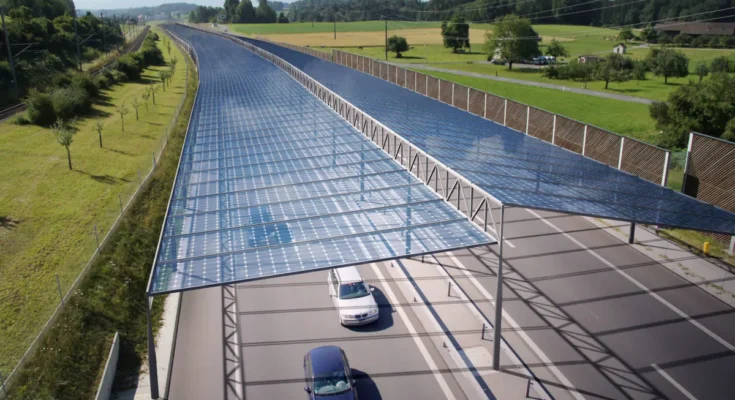There is unused space above highways. Let’s put solar farms there instead of farmland, Germany figures.

As part of its ambitious energy transition, or Energiewende, which aims to phase out nuclear power and fossil fuels and replace them with renewable sources, Germany is experimenting with a new way to generate clean energy from its highways. Finding enough space for solar panels and wind turbines is not easy in a densely populated country, hence the idea of covering a small section of the A81 Autobahn in Baden-Württemberg, near the Hegau-Ost rest area, with a solar roof.
The pilot project is part of a joint research initiative by Germany, Austria and Switzerland to explore the potential of using photovoltaic modules above the road surface.
The roof will cover an area of 10 by 17 meters, about 5.5 meters above the roadway. It will consist of a steel structure that supports the photovoltaic modules. The prototype will demonstrate that solar power generation above flowing traffic is feasible and safe. The researchers expect some major benefits from this approach, such as:
- Double use of space: The highway network covers a large area that is already sealed and can be used for renewable energy production without competing with other land uses.
- Protection of road surface: The solar roof can shield the road from precipitation and overheating, which can reduce maintenance costs and extend its lifespan.
- Noise reduction: The solar roof can also act as a noise barrier, improving the acoustic environment for nearby residents and drivers.

The construction of the prototype is expected to begin in the fall of 2021, and the operation will be monitored for about a year. Based on the results, further pilot applications could be rolled out in the future. However, the researchers acknowledge that building solar roofs over highways is much more expensive and technically challenging than installing photovoltaics on existing roofs or open spaces. Therefore, they see this as a niche solution for special, locally limited cases, rather than a widespread application.
At the same time, they estimate that covering all 13,000 km of the Autobahn network in Germany with solar panels would result in a capacity of 56 GW, which is more than the 49 GW of solar power that Germany had installed at the end of last year. This shows that the road network could be a valuable resource for renewable energy generation, if the costs and benefits are balanced.
Incredibly, the dense German highway network covers 2.6% of the overall area of the country.



